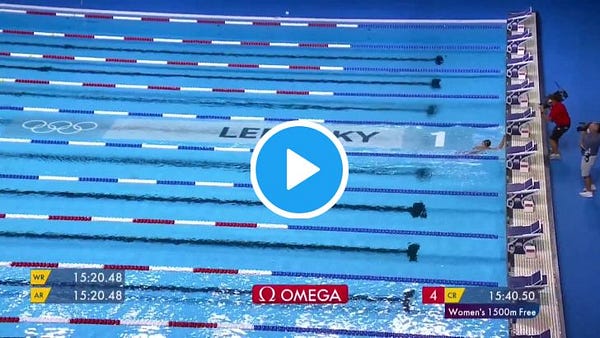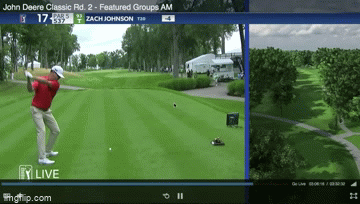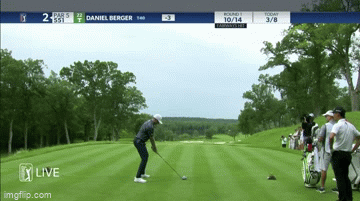Sticky Substances, Hole Shapes, and Tax Breaks
Sticky Substances
A couple weeks have passed since the MLB began checking pitchers for using banned sticky substances. In enabling pitchers to grip the baseball better, sticky substances allow a pitcher to throw pitches with a high spin rate. I did not realize how much of an (illegal) edge these substances provide pitchers. Now that the substance ban is being enforced, I’m finding out!
This Sports Illustrated article explains the benefits of generating spin. I highly recommend reading it. In particular, these two tables of pitcher Trevor Bauer’s data surprised me. The impact of spin rate is significant. The tables are comparing spin (revolutions per minute – RPMs) to the batting average against Bauer. June 2021 signifies enforcement of the ban on sticky substances.
In the top table, look how much spin (revolutions per minute - RPMs) Bauer picked up at the end of 2019 into the 2020 season. He would go on to win the National League Cy Young award (given to the best pitcher in baseball) in 2020. It seems unreasonable to attribute all of his success in 2020 to a spike in spin rate, but it is clearly part of the picture.
I can imagine that leading up to the enforced ban on sticky substances, teams “cheated” to varying degrees. In 2018, Trevor Bauer acknowledged the benefits of the illegal substances in making a public insinuation about the Astros:

So now that the MLB is enforcing the ban on sticky substances, are pitchers’ spin rates decreasing? You bet. From the SI article:
“Super-spin” four-seam fastballs (2,500 RPMs or more) plummeted 69% in the first week of enforcement compared to the rate before June 3, when the unofficial warning period began. An average of 17.2 super-spin fastballs per game fizzled to 5.3.
Across the league, spin rates are down and batting averages are slightly up. And on a case-by-case basis, the impact can be significant. Take Garrett Richards, for example. When the MLB announced the enforcement of the sticky substance ban, Richards complained that he’d have to reinvent his pitching style.
So I pulled his performance data (courtesy of Baseball Reference) to see how he’s pitched before and after enforcement of the sticky substance ban. He’s pitched four times since the MLB started checking for sticky substances on June 21st. Here are some stats I calculated from his game logs:
Predictably, his performance has declined across statistical categories since enforcement of the ban.
Surely General Managers are taking note of which pitchers have a sharp drop in spin rate following the MLB’s action. Additionally, do some batters struggle to hit high spin fastballs more than other batters? If so, his results should improve for the duration of the season. Perhaps he’ll be undervalued in the upcoming free agency.
A proper model adapts to changing conditions. When the rules change, there is a ripe opportunity for sharp decision makers to gain an edge.
Hole Shapes
Nearly every golfer on the PGA Tour has a dominant shot shape when hitting driver. Some players curve drives right to left, and a larger group prefers to curve their drives from left to right. Generally speaking, a player underperforms when attempting to curve the ball in the opposite direction of his dominant shot shape.
Golf holes often curve as well, which invites particular shot shapes. When a hole curves left to right, a player who curves the ball from left to right has an advantage – effectively his landing area to keep the ball in the fairway is larger than for players who curve the ball right to left.
I saw a perfect example on display this week at the John Deere Classic. Golfers Daniel Berger and Zach Johnson played together for the first two rounds. Daniel Berger hits a cut (curves left to right) off the tee. Zach Johnson prefers to hit a draw (curves right to left).
The fairway of Hole #17 curves from right to left. Trees line the left side of the fairway. Thus, players who prefer to shape their tee shots from left to right have little room to fit a tee shot that both avoids the trees and finds the fairway.
In my screen-recording below, Zach Johnson (right to left shape) hits first. Then Daniel Berger (left to right shape) hits. Watch how each player fares on his tee shot:
Zach Johnson finds the middle of the fairway and ultimately makes birdie on the Par 5. Daniel Berger hits his tee shot right and into a penalty area, ultimately bogeying the hole.
Forty minutes later, these players played Hole #2, which curves significantly from left to right. Advantage Berger!
While both players find the fairway on Hole #2, the tee shot sets up easier for Daniel Berger: The hole fits his natural shot shape. Over a large sample, you can expect players to perform better on holes that fit their natural shot shapes than holes shaped the opposite direction.
After this weekend, Daniel Berger has played each of the above holes 12 times in his career. On Hole #2, he has hit the fairway 9/12 (75%) times and he has gained +0.2 strokes per attempt on his competitors on the hole. On Hole #17, he has hit the fairway 7/12 (58%) times and has gained +0.03 strokes per attempt on his competitors.
Over the next month or so, I plan to write about the Ryder Cup and how the team captain should partner players with one another. Store this concept of hole shapes in your memory for that upcoming piece.
Franchise Ownership and Tax Breaks
A ProPublica article about the tax benefits of owning a professional sports team garnered attention this past week. The article explains that when purchasing a professional sports franchise, owners have the ability to amortize 90% of the purchase price.
The provided example spells out that a $2B purchase price means owners can claim a $120M business expense for each of the next 15 years. People well-versed in tax code may not bat an eye when reading this, but it seems odd that Steve Ballmer, billionaire owner of the Clippers, pays a 12% federal income tax rate, which is lower than the rate paid by employees of the arena.
With or without tax advantages, a sports franchise is a decent purchase:
If an NBA team becomes available-for-sale, there will be a Finding the Edge crowdfunding effort and loyal subscribers get early access.
Feedback/Contact
Email: Joseph.LaMagnaGolf@gmail.com
Twitter: @JosephLaMagna
Other Content I Enjoyed this Week
A feel-good article about Viktor Hovland and his Norwegian fans
Djokovic wins his 20th Grand Slam title at Wimbledon:
Katie Ledecky is going to dominate the Olympics in Tokyo:


Fore!


A random man grabs a club out of Rory McIlroy’s bag. Self-important fans continue to put athletes in harm’s way:












